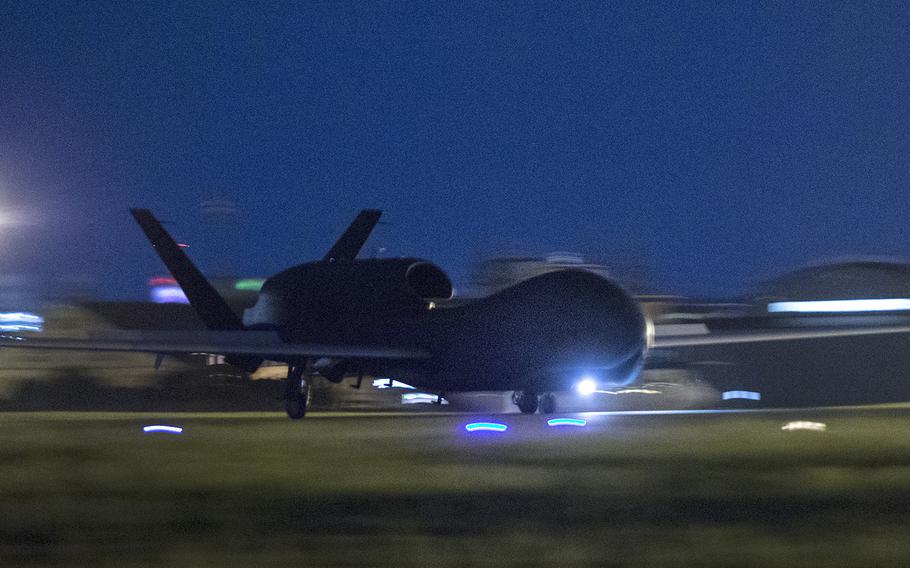
An RQ-4 Global Hawk from Andersen Air Force Base, Guam lands at Yokota Air Base, Japan on Monday, May 1, 2017. (Yasuo Osakabe/U.S. Air Force)
YOKOTA AIR BASE, Japan — An RQ-4 Global Hawk surveillance drone landed at Yokota Air Base Monday night, marking the start of a five-month deployment to Tokyo.
Five of the large military drones and 105 personnel from Detachment 1, 69th Reconnaissance Group, will fly out of the home of U.S. Forces Japan and 5th Air Force from May until October, the Air Force said in a statement.
Detachment 1 commander Lt. Col. Jeremy Fields watched the plane swoop over the lights of the world’s largest city and land smoothly on a darkened runway. “We love coming to Japan,” he said just before the wheels hit the tarmac.
Detachment 1 is responsible for launching and landing the Global Hawks before handing remote control during missions to airmen at Grand Forks, N.D., and Beale Air Force Base, Calif., he said.
The drones and members of the detachment normally travel from their home at Andersen Air Force Base, Guam, to operate out of Misawa Air Base in northern Japan during summer to avoid typhoons, Fields said. But that wasn’t possible last year or this year because of renovations to the runway at Misawa, he said.
The postponement until 2020 of a plan to base CV-22 Osprey tilt-rotor aircraft in Tokyo made the Yokota move simpler for the Global Hawks.
“We’re using the hangar they will go to,” Field said.
Next summer, once the Misawa runway has been renovated, the Global Hawks will likely return to there, he said.
The Northrop Grumman-built drones are thought capable of operating at an altitude of 60,000 feet, high above civilian air traffic, which normally does not surpass 40,000 feet. They can stay aloft for 34 hours and have a range of 14,000 miles.
Experts have said they could be useful tools for keeping tabs on North Korea’s nuclear program.
Fields didn’t comment on the role that the aircraft might play during the current spate of tensions in Korea but said that the detachment’s operational tempo is normal.
Their mission involves partnering with Japan and helping with humanitarian assistance, disaster relief and counter-piracy and counter-terrorism, he said.
robson.seth@stripes.com Twitter: @SethRobson1